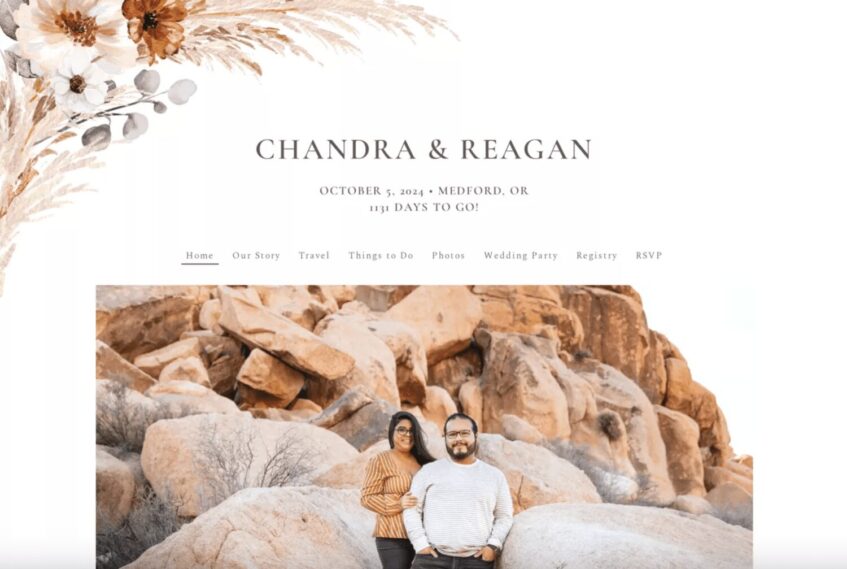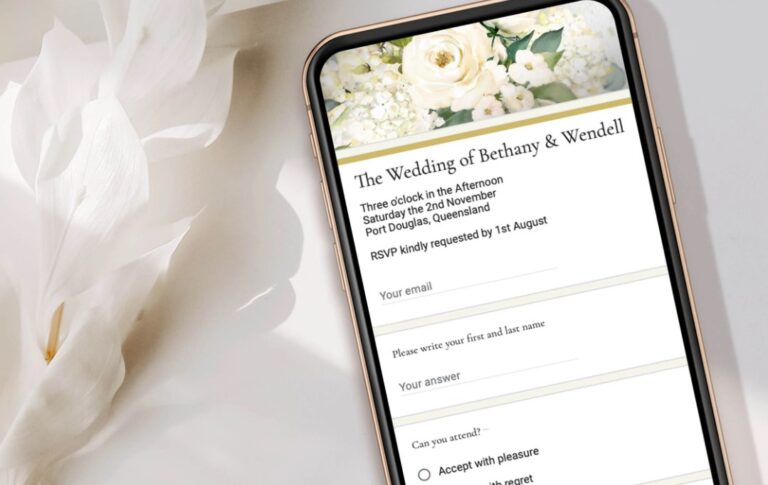In recent years, wedding website has become a common part of planning for the big day. It makes sense because getting yourself a web host and domain is no longer reserved for tech experts. Platforms such as WordPress and Wix have eliminated the complexity of the system.
Then again, you still need to set everything up for yourself with those platforms, which can be a struggle amidst the chaos of planning a wedding. That’s where dedicated wedding website providers come into play. If you’re interested to learn how they work, click here, and you’ll get all the answers.
This post will cover all the basics of setting up a wedding website from what you should include in it to how to collect RSVPs effortlessly and why it might be the missing piece in your master plan.
Things Your Wedding Website Should Include

Of course, a sleek website starts with the design. Humans are visual creatures, which means something that looks good to the eyes will also feel good internally. Isn’t that what you want for your wedding website?
This might be a cliché, but the theme of the website should be predominantly white. It’s the universal color of two hearts becoming one.
It’s also one of the only aspects where people can’t blame you for copying others because everyone is copying each other.
When you go for a dedicated service like Riley & Grey, you get plenty of templates to choose from. The good thing about templates is that they eliminate a lot of the manual work. You choose the template and replace the texts/images with your own.
Ideally, any wedding website should include the following information:
- Names of the bride and groom
- Date and time of the wedding
- The exact address of the venue, including instructions
- The RSVP date
It may sound very basic, but when you have a million other things to take care of, it’s easy to forget even the most obvious elements.
The highlight of this section is the wedding venue. You may be surprised how many people tend to go wrong here. They end up coordinating with friends and family to guide them to the venue. You might be local to the venue area, but not everyone on your guest list is. You must account for guests traveling across the country or from overseas.
When you create the wedding website, it’s recommended you create a dedicated page for the venue. You can integrate a map of the area to help the guests pinpoint exactly where they’re supposed to show up.
At the same time, you can promote your local area by including popular landmarks such as hotels, restaurants, bars, or other recreational activities. All of this should help paint a clear picture of what to expect when guests arrive for your big day.
How to Collect RSVPs Effortlessly
Managing RSVPs is perhaps the most cumbersome aspect of planning a wedding. You send out invites, collect the RSVPs, note the dietary preferences and accommodate requests. Processing everything manually can turn into a nightmare.
But when you use a wedding website for the process, you essentially automate the workflow. For starters, all templates will include a portal to send out the invites. You can simply import the CSV sheet of email addresses.
At the same time, the template will collect the RSVPs automatically for you. Some services even allow you to program reminders for the guests so that they can RSVP on time.
The best part is that this service often includes features that allow you to manage requests and preferences, all from a central dashboard. When you have a virtual assistant reminding you of the right thing at the right time, you eliminate the chance of forgetting.
Benefits of Using a Wedding Website for RSVPs

By now, you should have a pretty solid idea of what a wedding website is supposed to do. If you’re still struggling to grasp the benefits of designing one for yourself, let us spell them out.
A Single Source of Information for Both Parties
Traditionally, you send out save-the-date or invitations to the guest list months before the actual date. During this time, the guests can misplace the card or forget about it completely.
The same goes for you. If you’re using a paper trail to track the RSVPs and preferences, it’s going to be chaos if you lose it.
A wedding website solves both problems. Your guests have a tangible source of all the information they need. As it’s on the cloud, there’s no way they can lose it. If you set up reminders, they won’t be able to forget the date even if they want to.
Then there is your end. From RSVPs to preferences and requests, you have one place to store them all. You can even forward the details to vendors to get quotes and have them manage the whole thing on your behalf.
Easy to Accommodate Changes
A million things can go wrong when you’re planning the grandest day of your life. And you may need to change the date or venue of the wedding. With manual save-the-date, you have to start the whole process from the ground up. With a wedding website, however, it’s only a few clicks.
Simple to Communicate
Every individual is unique, and their preferences are different. For example, you may want to have a child-free wedding. It’s your day, and you have the right to want it. Then again, it’s a sensitive subject, and you don’t know how some of the guests will react to it.
The wedding website comes to the rescue here again. You can elaborate on your desires on the website in detail without going through awkward conversations over the phone or texts.
If some of the guests don’t agree with your terms, they can simply opt out of attending the wedding in person and honor your pending nuptials from afar.
Final Words

A wedding website can turn out to be a lifesaver, especially if you’re handling the logistics by yourself. It’s a one-stop repository of information for both yourself and the guests.
To avoid the hassles of managing RSVPs, add a wedding website to your checklist and streamline the whole process.

